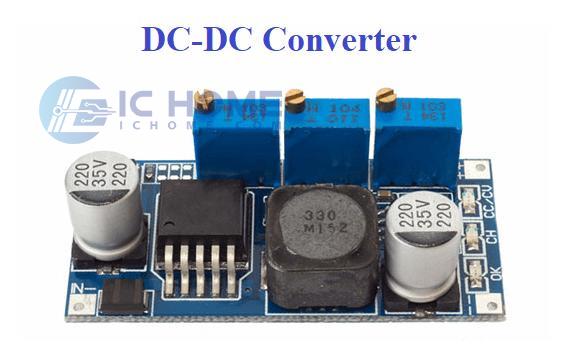How to Ensure DC-DC Converter Reliability in High-Temperature Environments
In many modern applications, from industrial automation to automotive electronics and outdoor telecom equipment, DC-DC converters must operate reliably in harsh conditions—often at elevated temperatures for extended periods.
Yet high temperatures can be one of the biggest threats to the performance, efficiency, and lifespan of a DC-DC converter. For procurement professionals and engineers alike, understanding what affects converter thermal performance and how to source the right models can prevent costly failures and unexpected downtime.

Why Temperature Is a Critical Factor
All DC-DC converters generate heat due to switching and conduction losses. When the ambient temperature rises, heat dissipation becomes more difficult, pushing key components—like MOSFETs, inductors, and electrolytic capacitors—closer to their thermal limits.
If not managed well, excessive heat can lead to:
-
Reduced efficiency
-
Thermal runaway
-
Accelerated component aging
-
Early capacitor drying or failure
-
Permanent damage to semiconductor junctions
The end result? Unexpected circuit failures, field returns, or safety risks—none of which your production line or brand reputation can afford.
Design Factors That Influence Thermal Performance
1. Efficiency:
Higher efficiency means less energy wasted as heat. Converters with advanced control topologies, synchronous rectification, or soft switching can significantly reduce power losses.
2. Package and Footprint:
Smaller modules are popular for compact designs but can struggle with heat dissipation if not properly designed. Metal baseplates or modules with integrated heatsinks can help manage thermal stress.
3. Switching Frequency:
Higher switching frequencies reduce passive component sizes but can increase power losses due to switching events. Striking the right balance is key when working in high-temp conditions.
4. Component Quality:
Look for converters that use high-grade capacitors rated for 105°C or higher. Solid polymer capacitors often outperform standard electrolytics in harsh temperatures.
Best Practices for Thermal Management
Optimize PCB Design
Good PCB design can improve heat spreading dramatically. Use wider copper planes, place thermal vias under hot components, and consider adding copper pours to conduct heat away from critical areas.
Add Adequate Heatsinking
If the converter includes a heatsink mounting option, use it—especially in enclosed spaces or near other heat-generating parts. Even passive airflow across the heatsink can drop temperatures significantly.
Ensure Proper Ventilation
In sealed or outdoor applications, forced airflow might not be practical. In that case, select converters specifically designed for natural convection or conduction cooling.
Derating
Operating a converter below its maximum rated current can reduce internal heat generation. Factor this into your BOM planning: sometimes using a slightly higher-rated part is a smart tradeoff in tough environments.
What to Look for When Sourcing
From a procurement standpoint, don’t just rely on datasheet efficiency figures at room temperature—check derating curves and thermal specs at your real-world operating conditions.
Choose suppliers who provide:
-
Verified thermal test data
-
Application engineering support to confirm the right part
-
Models with robust thermal protections like over-temperature shutdown
A good distributor like ICHOME can help compare options and propose proven models that meet high-temperature requirements without compromising supply chain stability.
A Growing Need in EV and Industrial Markets
The push for electric vehicles, outdoor 5G base stations, and Industry 4.0 equipment means more DC-DC converters must work reliably in ambient temperatures of 85°C and above—sometimes for 10 years or more.
This makes selecting converters with wide operating temperature ranges (+105°C, +125°C) increasingly important. Keep in mind: saving a few cents per unit on a cheaper, lower-rated converter can cost far more in warranty claims or redesigns later.
Conclusion
For electronics that operate in challenging thermal conditions, DC-DC converter reliability is not just about the part itself—it’s about smart thermal design, proper derating, and sourcing high-quality components from trusted suppliers.
By choosing the right converter and partnering with a distributor like ICHOME, you add an extra layer of confidence that your product will perform safely and efficiently for years to come, no matter the heat.




